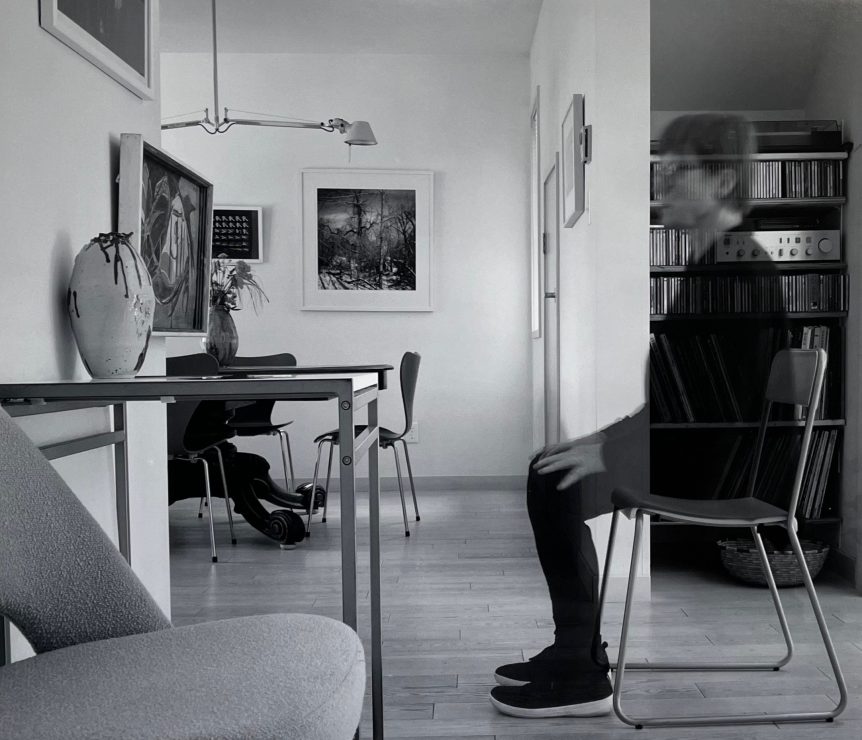Legacy Art Gallery’s newest exhibition offers a unique perspective on female artists

Photo by Lynda Gammon.
On Saturday, Jan. 6, I attended the opening reception for Latent, a new exhibition curated by Carolyn Butler Palmer at the Legacy Art Gallery in downtown Victoria, which features work by artist Lynda Gammon.
The exhibition is said to have emerged from conversations between Palmer and Gammon about how the work of female artists has largely been ignored and overlooked. Latent “furthers a desire to bring forward women’s work by honouring the many women who remain hidden in the University of Victoria’s art collection and the mechanisms that conceal them from view: the vault, accessioning, and the catalogue.”
Palmer and Gammon were recently interviewed by Margaret Gallagher for CBC radio. In the interview, Palmer expressed her belief that the representation of women is essential, as it is “really important to put forward positive images of women doing different sorts of work and be sources of inspiration for younger women, for girls.”
I really enjoyed how uniquely the exhibition presents the art and these female artists. We see two types of art in this exhibition. First, there are a series of photographs of Gammon in UVic’s vaults and archives observing works by female artists.
In the CBC interview, Gammon explained that the photographs are “time exposures, so they’re a little bit murky. It’s not like a really clear picture of what I’m looking at but that’s sort of the point of the exhibition, to show that … these works are still kind of hidden from view.”
Gammon’s photographs feature numerous female artists, including Katherine Maltwood, Stella Longdale, Molly Privett, Lena Jumbo, Elza Mayhew, Alice Paul, and Elizabeth Yeend Duer. A text panel in the inner gallery explains how she determined whether an artist was a woman or not.
Gammon began by creating a list of names based on biographical accounts. However, she notes that “assumptions concerning naming conventions supplemented this research.” Determining if an artist is a woman based solely on their name could create issues with the research, particularly by confining the categories to traditional westernized concepts of feminine and masculine names.
The other style of art in the exhibition are several large collages made primarily of foam. In her interview with CBC, Gammon explains that “these much larger photographic assemblage works, which are kind of like large collages … try to give a sense of what it’s like to be in the vault.”
After researching the artists featured in Gammon’s photographs, one thing is noticeably absent. It is not apparent, especially to the average reader, whether any of these artists are transgender women.
In the interview with CBC, Palmer states: “When I use the term ‘women,’ I mean women in all interpretations.” However, if she intends for this exhibition to display how “artists who identify as women are often overlooked, ignored, and sidestepped,” why are trans women noticeably absent from the collection?
The University of Victoria is home to the largest Transgender Archive in the world, which houses publications, art, memorabilia, and documents from “persons and organizations associated with activism by and for Trans+ people.” In the Transgender Archives, there are works by Aiyyana Maracle, who was an artist, educator, storyteller, and story-crafter. Aiyyana is one of many trans women who could have been featured in this exhibition, with numerous works in the care of the Transgender Archives.
The other potential issue with the exhibition is that the majority of artists featured are white women, although there are a few exceptions. The exhibition does feature select Indigenous women, including Lena Jumbo, a member of the Ahousaht Tribe, and Alice Paul, who was from the Hesquiaht First Nation. Elizabeth Yeend Duer is another exception, who was born a British citizen in Nagasaki to a Japanese woman and an Englishman.
If you are interested in the work of underrepresented women artists, I would ultimately recommend visiting the gallery. I also really enjoyed the opportunity to see what it looks like inside these vaults that are often hidden from the public. As the curator notes, the vault “is almost bursting with artwork, but you can’t really see it clearly in there.”
The exhibition runs until April 6 at the Legacy Art Gallery Downtown and is open Thursday to Saturday from 10 a.m.–4 p.m. Overall, I enjoyed the exhibition and thought it was a very unique take on art by women that has been largely overlooked. However, the lack of diversity should be acknowledged.








